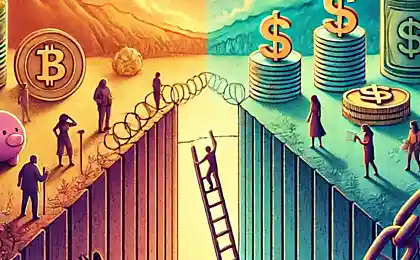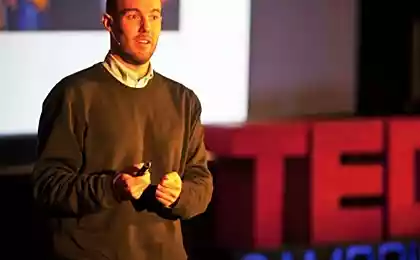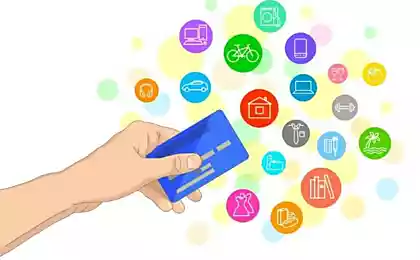231
Advice from people who got out of poverty on their own

The path from poverty to financial well-being is not simply a shift in bank balances, but a profound transformation of thinking, habits, and life strategies. Thousands of people around the world have been able to radically change their financial situation, relying on their own strength and clearly calibrated principles. Their experience provides an invaluable knowledge base for those willing to undertake a similar journey.
The key principle of success
Research shows that 84% of people who came out of poverty on their own changed their thinking before their financial situation changed. Transformation begins in your head, not your wallet.
Psychology of overcoming financial constraints

Dr. Carol Dweck of Stanford University found that people with a growth mindset are 3.2 times more likely to achieve financial goals. A growth mindset involves the belief that abilities can be developed through effort, the right strategies, and the help of others.
The Story of Maria Contreras
Maria grew up in a family with an income below the subsistence minimum in Mexico. At the age of 23, she moved to the U.S. with no language and $50 in her pocket. Today, at 45, she owns a chain of 12 restaurants. Her secret: "I stopped thinking about what I didn't have and focused on what I could create with what I had."
Practical research shows that people who successfully overcome poverty develop several key cognitive patterns. First, they move from reactive to proactive thinking – instead of reacting to circumstances, they create their own possibilities. Second, they develop long-term planning, considering each decision through the prism of its impact on the future.
Resource management strategies
The rule is 50/30/2050% of income on mandatory expenses, 30% on desires, 20% on savings and investments. This principle helped 67% of participants in the Harvard Business School study increase their savings.
Creating 3-5 sources of income reduces financial risks by 73%. Start by monetizing your skills in your free time.
Every dollar invested in professional development generates an average of $7 in income over 5 years, according to the U.S. Bureau of Labor Statistics.
The fundamental principle of financial growth is to understand the difference between assets and liabilities. Robert Kiyosaki, in Rich Dad, Poor Dad, defines assets as something that brings money into your pocket and liabilities as something that takes money out of it. People who have successfully overcome poverty concentrate on acquiring assets: real estate for rent, shares in dividend companies, starting a business or intellectual property.
A study of 10,000 millionaires found that 79% had never inherited, 80% were the first generation of the rich.
Developing entrepreneurial thinking

Entrepreneurial thinking does not necessarily mean starting your own business. It is a way of perceiving the world in which a person sees opportunities where others see problems. Even when working for hire, you can apply entrepreneurial principles: initiative, responsibility for the result, search for ways to increase efficiency.
Sarah Blakely, the founder of Spanx and the youngest female billionaire in history, started by selling fax machines. Her net worth is estimated at $1.2 billion, and she says, "Failure has become a friend to me." It is a source of strength and an absolutely necessary experience.
A critical element of entrepreneurial thinking is the ability to solve problems and create value. Thomas Corley, author of Rich Habits, found that 86% of wealthy people read every day, 63% listen to audiobooks on their way to work, and 76% spend at least 30 minutes a day educating themselves.
Networking and mentorship
Analysis of the biographies of successful people shows that 92% of them had mentors at key stages of their journey. Mentoring speeds up learning, helps avoid typical mistakes, and provides access to valuable connections. It is not necessary to look for a formal mentor – you can learn from people remotely, learning their experience through books, interviews and public speaking.
Practical advice
Create a visualization board with specific financial goals broken down by month. Neurobiological studies show that visualizing goals increases the likelihood of achieving them by 42%.
Technology and modern capabilities
The digital revolution has opened up unprecedented opportunities for income generation. E-commerce platforms, freelance exchanges, online education courses, investment apps are all tools that were not available to previous generations. It is important not just to use technology as a consumer, but to study how it can become a source of income.
Particular attention should be paid to the development of digital skills. According to the World Economic Forum, more than 1 billion jobs will be transformed by technology by 2030. Investing in learning programming, digital marketing, data analytics, or social media management can dramatically change career prospects.
Overcoming psychological barriers
One of the most difficult aspects of getting out of poverty is overcoming the psychological attitudes formed in childhood. Psychologists distinguish the phenomenon of “scaretti mindset” – deficit thinking, in which a person makes decisions based on the fear of losing what little he has, instead of the desire to multiply resources.
The experience of Jack Ma
The Alibaba founder was rejected for 30 jobs, including a position at KFC. He says, "If you don't give up, you still have a chance." Failure is the greatest failure.” Today, his fortune is estimated at $25 billion.
Dealing with limiting beliefs requires a systematic approach. Cognitive behavioral therapy shows that replacing negative thought patterns with constructive ones can significantly improve financial outcomes. Practical techniques include keeping a success diary, affirming, and surrounding yourself with growth-minded people.
Long-term planning and sustainability
Studies show that people who plan their finances 10-20 years in advance have 4 times more savings than those who plan from paycheck to paycheck. Long-term thinking includes setting up a reserve fund for 6-12 months of spending, pension planning, and risk insurance.
Financial sustainability also implies diversification – not just income, but also skills, investments, and social connections. Economic crises show that people with diverse competencies and multiple sources of income are better able to withstand financial shocks.
Final thought
Getting out of poverty is a marathon, not a sprint. Every small change in thinking and behavior creates a cumulative effect, which over the years leads to a radical transformation of life. Start today with one simple step.
Glossary
Installation for growth (Growth Mindset)
Psychological concept, according to which a person believes in the possibility of developing their abilities through effort, training and perseverance.
Assets
Resources or investments that generate income or increase in value over time (real estate, stocks, business).
liabilities
Liabilities or purchases that take money out of the budget without generating revenue (loans, expensive car for personal use).
Diversification
Risk sharing strategy by creating multiple sources of income or investing in different assets.
Scarcity Mindset (Scarcity Mindset)
A psychological attitude in which a person focuses on limited resources and makes decisions out of fear of loss.
Mentorship
The process of learning and development is led by a more experienced person who shares knowledge and experience.
5 Nutritional Changes to Help Reduce Stress Hormone Levels
How to Get Rid of Cortisol Face: The Complete Guide























